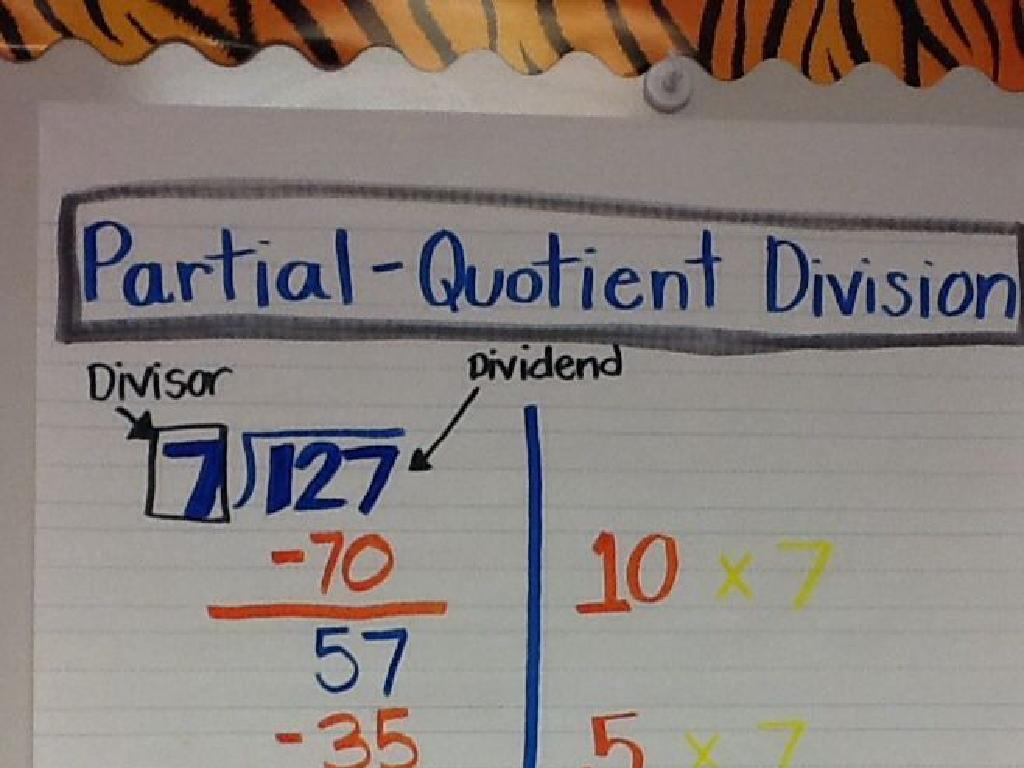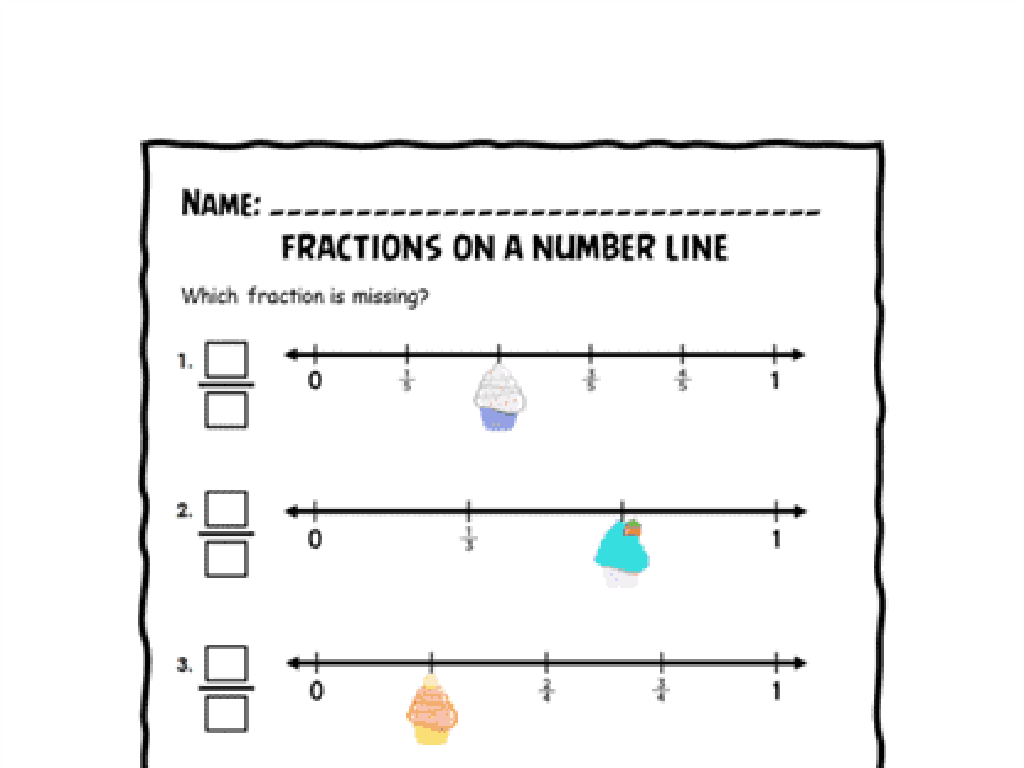Identify Equivalent Expressions Involving Exponents I
Subject: Math
Grade: Eighth grade
Topic: Exponents
Please LOG IN to download the presentation. Access is available to registered users only.
View More Content
Welcome to Exponents!
– Grasping exponent basics
– Exponents represent repeated multiplication, e.g., 3^2 means 3 x 3.
– Exponents in daily life
– Calculating area, volume, and understanding scientific notation.
– Quick exponent review
– An exponent tells how many times to use the base as a factor.
– Practice exponent problems
|
This slide introduces the concept of exponents to the students, aiming to build a foundational understanding. Start by explaining that exponents are a way to express repeated multiplication, which simplifies writing and calculating large numbers. Provide examples from everyday life where exponents are applicable, such as computing the area of a square (side^2) or the volume of a cube (side^3), and in understanding large or small numbers in scientific notation. Review the parts of an exponent, with the base and the exponent itself, and how to read them aloud. Conclude with some practice problems to solidify the students’ understanding, ensuring they grasp the concept of exponents before moving on to more complex applications.
Basic Exponent Rules
– Multiplication Rule for exponents
– Add exponents when multiplying like bases, e.g., x^2 * x^3 = x^(2+3)
– Division Rule for exponents
– Subtract exponents when dividing like bases, e.g., x^5 / x^2 = x^(5-2)
– Zero Exponent Rule
– Any number (except 0) to the zero power equals 1, e.g., 5^0 = 1
|
This slide introduces students to the fundamental rules of exponents, which are crucial for simplifying expressions in algebra. The multiplication rule states that when multiplying two expressions with the same base, you add the exponents. The division rule is similar but involves subtracting the exponents when dividing expressions with the same base. The zero exponent rule is a unique case where any non-zero base raised to the power of zero equals one. It’s important to emphasize that these rules only apply to like bases and to provide examples for each rule to ensure understanding. Practice problems can include simplifying expressions using these rules and verifying the equality of different expressions involving exponents.
Identifying Equivalent Expressions with Exponents
– Criteria for equivalent expressions
– Two expressions are equivalent if they simplify to the same value.
– Simplifying using exponent rules
– Apply rules like ‘a^m * a^n = a^(m+n)’ to simplify expressions.
– Example: 2^3 * 2^2 becomes 2^5
– Demonstrating how to combine exponents when bases are the same.
|
This slide introduces students to the concept of equivalent expressions in the context of exponents. Start by explaining that equivalent expressions are different expressions that simplify to the same value. Emphasize the importance of exponent rules, such as the product of powers rule, which states that when multiplying two powers with the same base, you can add the exponents. Use the example 2^3 * 2^2 to show how to apply this rule by adding the exponents to get 2^5. Encourage students to practice with additional examples and to verify the equivalence by calculating the simplified value of both expressions.
Simplifying Exponential Expressions
– Simplify: (3^4 * 3^2) / 3^5
– Apply the product rule: add exponents when multiplying with the same base, then the quotient rule: subtract exponents when dividing.
– Rewrite 16 as 2 to what power?
– 16 is 2 raised to the 4th power because 2 * 2 * 2 * 2 equals 16.
|
This slide is aimed at providing practice problems for students to apply the rules of exponents. The first example requires students to use both the product rule and the quotient rule for exponents. Remind students that when multiplying powers with the same base, they add the exponents, and when dividing, they subtract the exponents. For the second example, guide students to understand that rewriting a number as a power of another number involves finding the exponent that makes the base equal to the original number. Provide additional examples if time allows and encourage students to solve these problems step-by-step. Possible activities include peer review of solutions or creating similar problems for classmates to solve.
Class Activity: Exponent Bingo
– Receive your unique Bingo card
– Listen for called equivalent expressions
– Mark expressions matching your card
– Examples: If I say ‘2^3’, mark ‘8’ if it’s on your card
– Aim for five in a row to win!
|
This activity is designed to reinforce the students’ understanding of exponents through a fun and interactive game. Each Bingo card will contain a variety of expressions involving exponents. As the teacher, you will call out expressions that are equivalent to those on the cards. Students must listen carefully and mark off the expressions on their cards that match the called-out equivalent. The first student to get five correct marks in a row horizontally, vertically, or diagonally shouts ‘Bingo!’ and wins. Prepare several rounds to ensure all students have the opportunity to engage and win. Possible expressions to call out include the expanded form of exponents, such as ‘2^3’ for ‘8’, or vice versa. This will help students quickly identify and match equivalent expressions, enhancing their comprehension of exponents.
Homework: Equivalent Expressions with Exponents
– Practice with homework problems
– Review exponent rules
– Remember the power of a product and quotient rules
– Clarify any doubts
– Ask now or in the next class if something is unclear
– Prepare for next class
– We’ll continue exploring exponents
|
For homework, students will reinforce their understanding of equivalent expressions involving exponents by completing practice problems. Remind them to refer to the exponent rules discussed in class, such as the power of a product and quotient rules. Encourage students to ask any lingering questions they may have before the end of the session. This will help ensure they are well-prepared for the next class. Provide a variety of problems in the homework to cover different scenarios and rules. The goal is to build confidence in identifying and working with equivalent exponential expressions.






